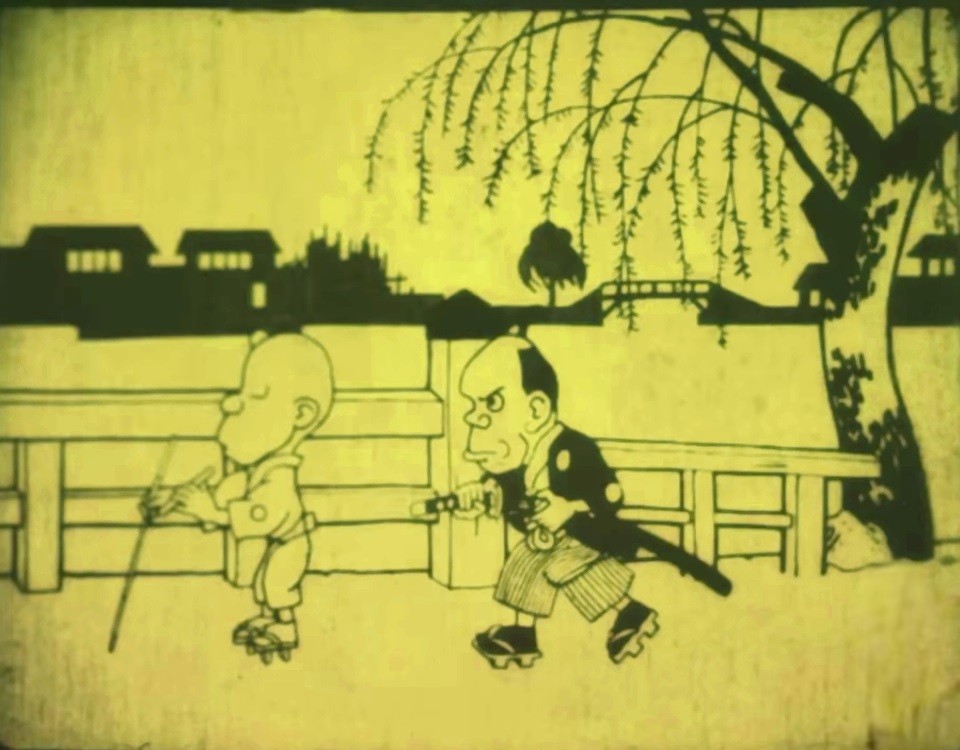|
Shin Misawa
is a Japanese anime director and storyboard artist. He is on general staff at Studio Comet, and handles production and directing jobs. Works Credits are as director unless otherwise indicated. *'' Ashita Tenki ni Naare'' (TV series, production) *''Ask Dr. Rin!'' (TV series; Director) *''Capeta'' (TV series; Director) *''Chikyū SOS Sore Ike Kororin'' (TV series, storyboards) *'' DT Eightron'' (TV series) *'' Fire Emblem'' ( OVA; Director, Storyboard, Production Design) *'' Geobreeders: Breakthrough'' (OVA; series director, storyboards) *''Gingitsune'' (TV series; Director, Storyboard (eps. 1, 7, 12), Episode Director (ep. 12)) *'' High School! Kimengumi'' (movie; Director (part 2)) *'' High School Mystery: Gakuen Nanafushigi'' (TV series; director, storyboards (ep.11)) *''Initial D'' (TV series; (1st stage, extra stage) Director, Storyboard (eps 1–2, 4–5), Episode Director (ep 1)) *'' Kochira Katsushika-ku Kameari Kōen-mae Hashutsujo'' (TV series; Director) *'' Meimon! Dai-sa ... [...More Info...] [...Related Items...] OR: [Wikipedia] [Google] [Baidu] |
Anime
is hand-drawn and computer-generated animation originating from Japan. Outside of Japan and in English, ''anime'' refers specifically to animation produced in Japan. However, in Japan and in Japanese, (a term derived from a shortening of the English word ''animation'') describes all animated works, regardless of style or origin. Animation produced outside of Japan with similar style to Japanese animation is commonly referred to as anime-influenced animation. The earliest commercial Japanese animations date to 1917. A characteristic art style emerged in the 1960s with the works of cartoonist Osamu Tezuka and spread in following decades, developing a large domestic audience. Anime is distributed theatrically, through television broadcasts, directly to home media, and over the Internet. In addition to original works, anime are often adaptations of Japanese comics (manga), light novels, or video games. It is classified into numerous genres targeting various broad and nic ... [...More Info...] [...Related Items...] OR: [Wikipedia] [Google] [Baidu] |
High School! Kimengumi
is a Japanese manga series written and illustrated by Motoei Shinzawa. A first series ''Third Year Funny-face Club'' was serialized in Shueisha's ''Weekly Shōnen Jump'' from October 1980 to April 1982. ''High School! Kimengumi'' was serialized in the same magazine from April 1982 to July 1987. An anime television series aired from October 1985 to September 1987 and an animated film premiered in July 1986. A sequel manga, titled ''Flash! Funny-face Club'', was published in Square Enix's '' Monthly Shōnen Gangan'' from 2001 to 2005. Summary ''High School! Kimengumi'' is an episodic chronicle of the bizarre adventures of a group of misfit junior high school (and later high school) boys who form a club known as the "Kimengumi". All of the character names in the series are puns. For example, "Kawa Yui" is another way of saying " kawaii", and "Uru Chie" is a slang form of "urusai", meaning "obnoxious" or "annoying". Media Manga ''High School! Kimengumi'' is written and ... [...More Info...] [...Related Items...] OR: [Wikipedia] [Google] [Baidu] |
Anime Directors
An animation director is either the director in charge of all aspects of the animation process during the production of an animated film or television, and animated segment for a live action film or television show, or the animator in charge of correcting layouts and drawings. The difference between the two is largely the difference between the western and eastern animation industries. Responsibilities Western production pipeline In western animation, such as Disney, the responsibilities of an animation director include directing the storyboards, character designs, background animation, and other technical aspects of a project's animation. Some animated film productions may split the duties between an animation director, who focuses on the creation of the animation, and a director who oversees all other aspects of the film. A supervising animator is commonly in charge of all aspects of the design and artwork for a single major character. The supervising animator oversees a group ... [...More Info...] [...Related Items...] OR: [Wikipedia] [Google] [Baidu] |
Tsuyoshi Shikkari Shinasai
Tsuyoshi is a masculine Japanese given name. Possible writings Tsuyoshi can be written using different kanji characters. Here are some examples: *剛, "sturdy" *剛史, "sturdy, history" *剛志, "sturdy, will" *剛士, "sturdy, gentleman/samurai" *剛司, "sturdy, administer" *豪, "overpowering" *毅, "strong" *力, "power" *強, "force" *津芳, "river crossing, virtuous/fragrant" The name can also be written in hiragana つよし or katakana ツヨシ. Notable people with the name * Tsuyoshi Abe (阿部 力, born 1982), a Japanese actor * Tsuyoshi Arawashi (荒鷲 毅, born 1986), Mongolian sumo wrestler *Tsuyoshi Chitose (千歳 强直, 1898-1984), the founder of Chito-ryu karate *Tsuyoshi Dōmoto (堂本 剛, born 1979), a Japanese performing artist *Tsuyoshi Fujita (藤田 剛, born 1961), Japanese rugby union player * Tsuyoshi Hasegawa (長谷川 毅, born 1941), a Japanese historian * Tsuyoshi Hayashi (林 剛史, born 1982), a Japanese actor * Tsuyoshi Ichinohe (� ... [...More Info...] [...Related Items...] OR: [Wikipedia] [Google] [Baidu] |
D Children Light & Dark
D, or d, is the fourth letter in the Latin alphabet, used in the modern English alphabet, the alphabets of other western European languages and others worldwide. Its name in English is ''dee'' (pronounced ), plural ''dees''. History The Semitic letter Dāleth may have developed from the logogram for a fish or a door. There are many different Egyptian hieroglyphs that might have inspired this. In Semitic, Ancient Greek and Latin, the letter represented ; in the Etruscan alphabet the letter was archaic, but still retained (see letter B). The equivalent Greek letter is Delta, Δ. Architecture The minuscule (lower-case) form of 'd' consists of a lower-story left bowl and a stem ascender. It most likely developed by gradual variations on the majuscule (capital) form 'D', and today now composed as a stem with a full lobe to the right. In handwriting, it was common to start the arc to the left of the vertical stroke, resulting in a serif at the top of the arc. This serif ... [...More Info...] [...Related Items...] OR: [Wikipedia] [Google] [Baidu] |
Kochira Katsushika-ku Kameari Kōen-mae Hashutsujo
, often shortened to , and known in English as ''KochiKame: Tokyo Beat Cops'', is a Japanese comedy manga series written and illustrated by Osamu Akimoto. It takes place in the present day, in and around a neighborhood police station (kōban) in the downtown part of Tokyo, and revolves around the misadventures of middle-aged cop Kankichi Ryotsu. It was continuously serialized in ''Weekly Shōnen Jump'' for 40 years, from September 1976 to September 2016. Its 1,960 chapters were collected into 201 ''tankōbon'' volumes, making it the manga with the second-highest number of volumes for a single series. The manga has been adapted into an anime television series, produced by Studio Gallop and broadcast in Japan by Fuji TV, three theatrical animated films (by Tatsunoko and Gallop, respectively), two live-action movies, several stage adaptations, and a live-action television series. In addition, a short anime featuring characters from the series was produced to popularize the P ... [...More Info...] [...Related Items...] OR: [Wikipedia] [Google] [Baidu] |
Initial D
is a Japanese street racing manga series written and illustrated by Shuichi Shigeno. It was serialized in Kodansha's ''seinen'' manga magazine ''Weekly Young Magazine'' from 1995 to 2013, with the chapters collected into 48 ''tankōbon'' volumes. The story focuses on the world of illegal Japanese street racing, where all the action is concentrated in the Touge, mountain passes and rarely in cities or urban areas, and with the drifting (motorsport), drifting racing style emphasized in particular. Professional race car driver and pioneer of drifting Keiichi Tsuchiya helped with editorial supervision. The story is centered on the prefecture of Gunma, more specifically on several mountains in the Kantō region and in their surrounding cities and towns. Although some of the names of the locations the characters race in have been fictionalized, all of the locations in the series are based on actual locations in Japan. ''Initial D'' has been adapted into several anime t ... [...More Info...] [...Related Items...] OR: [Wikipedia] [Google] [Baidu] |
Gingitsune
is a Japanese manga series written and illustrated by Sayori Ochiai. It was serialized in Shueisha's ''seinen'' manga magazine ''Ultra Jump'' from June 2009 to October 2022, with its chapters collected in 18 ''tankōbon'' volumes. It follows Makoto Saeki, the daughter of a shrine priest who can see the shrine's messenger, Gintarou, and the everyday lives of the two as a go-between for the gods and humans. A twelve-episode anime television series adaptation by Diomedéa was broadcast from October to December 2013. Plot Makoto Saeki is the daughter of a shrine priest in a small Inari Shinto shrine dedicated to the God Ukanomitama. When she was 4 years old, her mother died and she inherited an unusual gift called The Sight, allowing her to see the Shrine's Heralds. She met the messenger of the god Inari, an anthropomorphic fox named Gintarou, during the funeral, and he declared her as the fifteenth generation heiress. Gintarou can see a short glimpse into the future and can find ... [...More Info...] [...Related Items...] OR: [Wikipedia] [Google] [Baidu] |
Studio Comet
is an animation studio with its headquarters in Toyotamanaka, Nerima, Tokyo, Japan. It was established on January 21, 1986. ." Studio Comet. Retrieved on March 15, 2012. "〒176-0013 東京都練馬区豊玉中3-1-3" Notable staff * Hiroshi Kanazawa (animation director, character designer) * Kazuo Harada (anima ...[...More Info...] [...Related Items...] OR: [Wikipedia] [Google] [Baidu] |
Breakthrough
Breakthrough or break through may refer to: Arts Books * ''Break Through'' (book), a 2007 book about environmentalism by Ted Nordhaus and Michael Shellenberger * ''Break Through'' (play), a 2011 episodic play portraying scenes from LGBT life * '' The Breakthrough: Politics and Race in the Age of Obama'', a 2009 book by journalist Gwen Ifill * "The Breakthrough" (story), a 1971 short story by Daphne du Maurier Film and television * ''Breakthrough'' (1950 film), an American war film featuring John Agar * ''Breakthrough'' (1986 film), a Soviet disaster film * ''Breakthrough'' (1979 film), a West German war film, sequel to ''Cross of Iron'' * ''Break Through!'', a 2005 Japanese film directed by Kazuyuki Izutsu * ''Breakthrough'' (2019 film), an American Christian film * ''Breakthrough: With Rod Parsley'', a 1996 television program featuring Rod Parsley * ''Breakthrough'' (TV series), a 2015 National Geographic Channel television program Music Albums * ''Break Through'' (alb ... [...More Info...] [...Related Items...] OR: [Wikipedia] [Google] [Baidu] |



